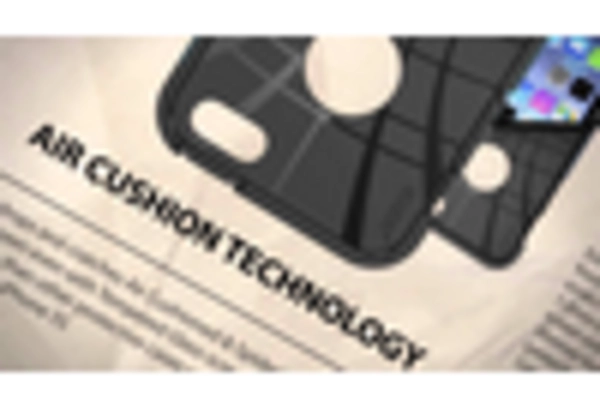Increased Demand in Defense Sector
The Global Hovercraft Industry is witnessing heightened demand from the defense sector, where hovercraft are valued for their versatility and operational capabilities. Military applications, including troop transport, logistics, and reconnaissance, benefit from the unique ability of hovercraft to traverse various terrains, including water, sand, and ice. This adaptability is particularly advantageous in coastal and riverine operations. Recent contracts awarded to manufacturers for military hovercraft indicate a robust growth trajectory, with defense budgets increasingly allocating funds for advanced amphibious vehicles. The defense sector's focus on enhancing operational readiness and mobility is likely to sustain this demand, contributing to an estimated market growth of 6% annually in the coming years.
Expansion of Commercial Applications
The Global Hovercraft Industry is experiencing an expansion in commercial applications, particularly in sectors such as tourism, transportation, and logistics. Hovercraft Market are increasingly utilized for passenger transport in regions with challenging waterways, providing a unique travel experience that attracts tourists. Additionally, logistics companies are recognizing the advantages of hovercraft for delivering goods to remote or hard-to-reach areas. The ability to operate in shallow waters and on various surfaces enhances the efficiency of supply chains. Market data suggests that the commercial segment could account for over 30% of total hovercraft sales by 2026, reflecting a growing recognition of their utility in diverse commercial contexts.
Focus on Environmental Sustainability
The Global Hovercraft Industry is increasingly aligning with global sustainability goals, as manufacturers prioritize environmentally friendly designs. The shift towards reducing carbon footprints is evident in the development of hovercraft that utilize alternative fuels and energy-efficient technologies. This trend is further supported by regulatory frameworks aimed at minimizing emissions from transportation sectors. As consumers and governments alike advocate for greener solutions, hovercraft that meet these criteria are likely to gain market traction. The potential for hovercraft to operate in sensitive ecological areas without causing significant disruption positions them favorably in the market. Analysts predict that the emphasis on sustainability could drive a 4% increase in market share for eco-friendly hovercraft models over the next few years.
Rising Investment in Infrastructure Development
The Global Hovercraft Industry is benefiting from rising investments in infrastructure development, particularly in coastal and riverine regions. Governments and private entities are increasingly recognizing the need for efficient transportation solutions that can navigate challenging environments. This investment trend is likely to enhance the demand for hovercraft, as they offer a viable alternative for connecting remote communities and facilitating trade. Infrastructure projects, such as ports and terminals designed for hovercraft operations, are emerging, further supporting market growth. Projections indicate that infrastructure investments could lead to a 5% increase in hovercraft deployment in the next few years, as stakeholders seek to leverage their unique capabilities.
Technological Advancements in Hovercraft Design
The Global Hovercraft Industry is experiencing a surge in technological advancements that enhance performance and efficiency. Innovations in materials, such as lightweight composites, contribute to improved fuel efficiency and operational capabilities. Furthermore, advancements in propulsion systems, including hybrid and electric technologies, are gaining traction. These developments not only reduce operational costs but also expand the range of applications for hovercraft, from commercial transport to search and rescue operations. The integration of advanced navigation and control systems is also noteworthy, as it enhances safety and maneuverability. As a result, the market is projected to grow at a compound annual growth rate of approximately 5.2% over the next five years, driven by these technological improvements.


















Leave a Comment